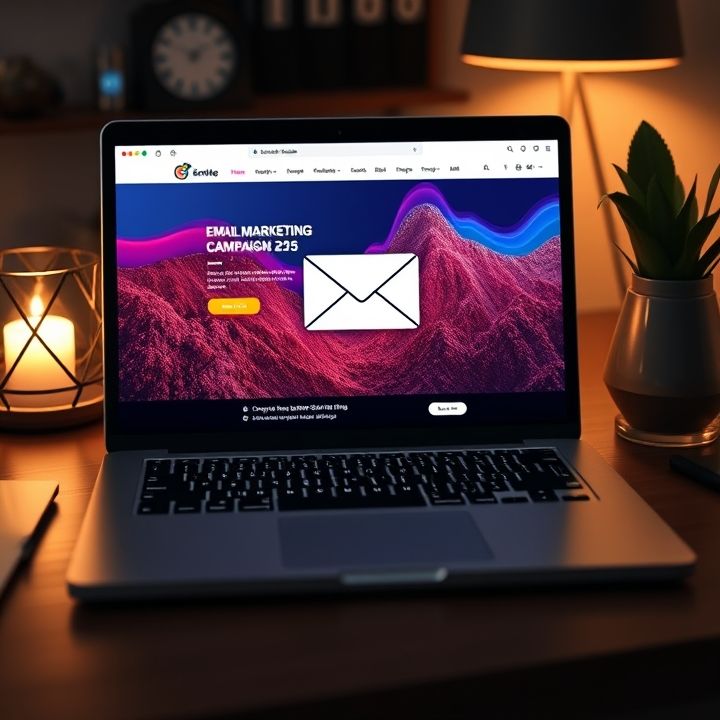Table of Contents
- Introduction
- Segmenting Your Audience for Tailored Messaging
- Crafting Compelling Email Content
- Setting Up Automated Email Sequences
- Personalization Techniques to Increase Engagement
- Utilizing A/B Testing for Optimization
- Monitoring Metrics and Analyzing Performance
- Incorporating Feedback and Continuous Improvement
- Timing and Frequency Strategies for Sending Emails
- Conclusion
- Frequently Asked Questions
Introduction
Are you tired of seeing your leads slip through the cracks? Want to convert potential clients into loyal customers without lifting a finger? Email drip campaigns might just be the secret weapon you need! Imagine automating your lead nurturing process and skyrocketing your conversion rates—sounds magical, right?
With the right strategy, email drip campaigns can guide your leads through a carefully curated journey, transforming them from curious prospects to paying customers. Here’s a quick glance at what a successful drip campaign can achieve:
| Type of Email | Purpose |
|---|---|
| Welcome Email | Introduce your brand and set expectations |
| Nurture Email | Provide valuable content to build trust |
| Conversion Email | Encourage leads to make a purchase |
| Follow-Up Email | Engage past customers and encourage repeat business |
Ready to unlock the full potential of your email marketing? Let’s dive into the secret tactics that can revolutionize your lead nurturing with email drip campaigns!
Segmenting Your Audience for Tailored Messaging
Segmenting your audience for tailored messaging is a crucial tactic in effectively nurturing leads through email drip campaigns. By dividing your audience into specific groups based on demographics, behaviors, or interests, you can create more personalized and relevant content for each segment. This targeted approach helps in addressing the unique needs and pain points of different sub-groups, thereby increasing engagement and conversion rates.
Start by analyzing your existing data to identify key segments. Common criteria for segmentation include age, gender, geographical location, purchase history, and engagement level with previous emails. Using this information, you can craft customized emails that speak directly to the interests and needs of each segment. For instance, a segment consisting of new subscribers might benefit from an introductory email series, while repeat customers could receive exclusive offers or loyalty rewards.
Additionally, regularly updating and refining your segments based on ongoing data analysis ensures that your email campaigns remain relevant and effective. With tailored messaging, you not only build stronger relationships with your leads but also enhance the overall effectiveness of your email marketing efforts.
Crafting Compelling Email Content
Crafting compelling email content is essential for the success of your lead nurturing campaign. First, you need to understand your audience’s interests and pain points. By segmenting your email list, you can tailor your messages to resonate with different audience groups. Use a catchy subject line to grab their attention, encouraging them to open the email. Keep the content concise and valuable, offering insights, tips, or solutions that address their challenges.
Incorporate a clear call-to-action (CTA) that guides the reader on what to do next, whether it’s downloading a whitepaper, signing up for a webinar, or scheduling a call. Utilize engaging visuals such as images, infographics, and videos to break up text and maintain interest. Personalization is key; use the recipient’s name and customize content based on their previous interactions with your brand.
Additionally, make your emails mobile-friendly, ensuring that they look good and function well on smartphones and tablets. Your ultimate goal is to build trust and provide value, fostering a relationship that naturally leads to conversions. Regular analysis of your email metrics, such as open rates and click-through rates, will help you fine-tune your content strategy for better results.
Setting Up Automated Email Sequences
Setting up automated email sequences is a crucial step in nurturing leads through drip campaigns. First, it’s important to segment your email list based on factors like user behavior, demographics, or where they are in the sales funnel. This ensures that each lead receives content that is relevant and personalized. Next, create a series of emails that follow a logical flow. Start with a welcome email to introduce your brand and set expectations. Follow up with educational content that addresses the lead’s pain points and demonstrates your expertise.
Time the emails strategically to maintain engagement without overwhelming the recipient. Typically, emails in a drip campaign are sent out every few days to a week apart. Use compelling subject lines and clear calls-to-action (CTAs) to encourage interaction. Automation tools can help you schedule and send these emails, track open rates, and measure engagement. Finally, regularly review and tweak your email sequences based on performance metrics to ensure they remain effective.
Personalization Techniques to Increase Engagement
Personalization is one of the most effective techniques to increase engagement in email drip campaigns. By tailor-fitting your messages to individual recipients, you can make your emails more relevant and engaging. One of the most straightforward methods is using the recipient’s name in the subject line and greeting. This simple technique can significantly improve open rates.
Segmentation is another powerful tool. By dividing your email list into smaller groups based on factors like demographics, purchase history, and engagement levels, you can send more targeted messages. For example, a tech company could send different emails to software developers and IT managers, addressing their unique challenges and needs.
Dynamic content is also important for personalization. This involves changing parts of your email content based on recipient data. For instance, you could show different product recommendations based on previous purchases or browsing behavior. This kind of customization can make your emails feel more relevant and valuable to the recipient.
Behavior-triggered emails are another effective tactic. These are emails automatically sent based on actions taken by the recipient, such as browsing a product page or abandoning a cart. By responding to their behavior in real-time, you can nurture leads more effectively.
Utilizing A/B Testing for Optimization
Utilizing A/B testing for optimization in email drip campaigns is a critical tactic for enhancing performance and engagement. A/B testing, also known as split testing, involves sending two variations of an email to different segments of your audience to determine which performs better. This method allows you to test various elements such as subject lines, email content, call-to-action buttons, and images. By analyzing open rates, click-through rates, and conversion rates, you can identify which version resonates more with your audience.
To implement A/B testing, begin by selecting the element you want to test. Create two versions of the email, ensuring only one variable is changed between them. Next, divide your email list into two equal segments and send one version to each group. Monitor the performance metrics closely to ascertain which version yields better results. Repeat the process iteratively to continually refine and improve your emails.
This data-driven approach helps in making informed decisions and optimizing email content for maximum impact. Over time, A/B testing can significantly increase engagement rates, improve lead nurturing, and ultimately drive more conversions.
Monitoring Metrics and Analyzing Performance
Monitoring metrics and analyzing performance are crucial components of effectively nurturing leads through email drip campaigns. By keeping a close eye on various metrics, businesses can gain valuable insights into how well their campaigns are performing and where improvements can be made. Key metrics to monitor include open rates, click-through rates, conversion rates, and unsubscribe rates. These metrics provide a clear picture of how engaging and relevant your emails are to your audience.
Analyzing performance involves not only looking at these numbers but also understanding the underlying reasons behind them. For instance, if open rates are low, it may indicate that subject lines are not compelling enough. Similarly, low click-through rates could suggest that the email content is not resonating with the recipients or that the calls to action are not clear or enticing. By regularly reviewing and interpreting these metrics, businesses can make data-driven decisions to refine their email content, subject lines, and overall strategy.
Additionally, A/B testing different email elements, such as subject lines, send times, and content variations, can provide further insights and help optimize campaign performance. Continuous monitoring and analysis ensure that drip campaigns remain effective and aligned with lead nurturing goals.
Incorporating Feedback and Continuous Improvement
Incorporating feedback and continuous improvement are crucial elements for the success of your email drip campaigns. To start, actively seek feedback from your subscribers by asking for their opinions through surveys or direct emails. Understanding their preferences and dislikes can provide invaluable insights to tailor your content more effectively. Personalized messages that reflect the interest of your audience are more likely to engage and convert leads.
Analyze the performance metrics of your campaigns such as open rates, click-through rates, and conversions. These metrics can help you identify what’s working and what needs adjustment. For instance, if a particular email has a low open rate, you might consider revamping the subject line or improving the preview text.
Moreover, A/B testing different elements of your emails—including design, content, and send times—can offer data-driven evidence on what resonates best with your audience. Regularly updating your strategy based on this feedback ensures that your campaigns remain relevant and effective. Staying up-to-date with the latest trends and continually refining your approach will ultimately lead to better engagement and higher conversion rates.
Timing and Frequency Strategies for Sending Emails
When it comes to email drip campaigns, timing and frequency are crucial to effectively nurturing leads. The goal is to find the perfect balance that keeps your audience engaged without overwhelming them. It is generally recommended to start with a welcome email immediately after a subscription or a trigger action. This sets the tone and provides valuable information right away.
Following the welcome email, the frequency can be adjusted based on the nature of your business and the behavior of your leads. A common approach is to send an initial series of emails more frequently, perhaps one every few days, providing useful and relevant content. As the campaign progresses, you can space the emails out more, usually to a week or two apart, to maintain engagement without causing fatigue.
Timing also plays a significant role. Studies suggest that sending emails on weekdays, particularly Tuesdays and Thursdays, yields better open rates. Additionally, consider the time zone of your audience to ensure emails arrive at optimal times during the day, such as mid-morning. Testing different days and times can give insights into what works best for your specific audience.
Ultimately, monitoring the performance of your emails and being flexible with your timing and frequency can significantly improve the effectiveness of your drip campaigns.
Conclusion
In conclusion, implementing email drip campaigns is a powerful and efficient way to nurture leads and drive conversions. By segmenting your audience, crafting compelling content, setting up automated email sequences, and incorporating personalization techniques, you can significantly enhance engagement. Utilizing A/B testing and monitoring key metrics allows you to optimize your campaigns continuously. Regularly incorporating feedback and adjusting your strategies based on data-driven insights ensures ongoing improvement and relevance.
Remember that timing and frequency play crucial roles in maintaining audience interest without overwhelming them. Pay attention to best practices for send times and experiment to find what works best for your specific audience. With consistent effort, thoughtful refinement, and a focus on delivering value, your email drip campaigns can unlock new levels of lead nurturing success.

